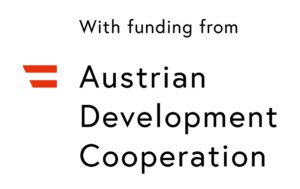Kenya and Ethiopia, June 2022 – Oct. 2024
Background
One and a half billion people worldwide live in fragile states and regions affected by conflict and violence. The conflicts at the Kenyan-Ethiopian border have been driven by a plethora of problems including scarcity of pasture & water, climate change, cattle rustling, politics of ethnicity and clan, political/administrative boundary disputes, disregard for indigenous organizations and systems. The borderlands support livelihood systems for millions of people in (semi)pastoralism with closely connected trade and well-knitted social networks based on cross-country clan and ethnic affiliations. With this triple nexus program, addressing the interlinkages between humanitarian aid, development, and peace, we aim to contribute to a foundation for stability and resilience, on which long-term sustainable development and poverty reduction will be possible. At national level, the Kenya and Ethiopia governments share an architecture for peace, disaster risk reduction and cross border initiatives. At local level, there is a need to strengthen coordination and cooperation. We build on the existing foundations and systems for peaceful settlement and early response to stresses in the area.
Project objectives
- Enhanced human capabilities and social assets to reduce vulnerabilities driving and resulting from conflict and weak social cohesion.
- Strengthened capacities and agency of indigenous institutions, peace, and Disaster Risk Reduction committees, and local CSO’s to collectively address fragilities caused by and causing conflict.
- Enhanced responsiveness of regional, national, and local governments to local priorities on social cohesion, peace, and inclusion.
Project Details
What we do?
The project starts with a ‘risk vulnerability assessment’ that enables communities to identify and prioritize the causes of grievance from their perspective and to identify what they see as solutions. This process is led by local volunteers so that the program is well rooted in society and is done with many different groups to ensure a range of perspectives are heard. The communities develop an action plan, in which we support them to deliver. This may be through capacity building on knowledge and skills they need for example on climate resilient livelihoods, establishing seedbanks, dialogue and mediation skills and community systems to resolve grievances peacefully and bridging connections between communities and duty bearers so communities can advocate for their rights and have their voices heard. The communities own the responsibility to deliver the action plan. VSO and partners facilitate, build bridges and support where necessary. We will work with local governments and support them to respond to the needs of the communities they serve.
- At the individual level the program will build the capabilities of community/youth volunteers to lead actions to build peace within their communities by responding to the root drivers of the fragility such as climate change, natural resource management and governance.
- At the system level it builds the technical and organizational capabilities of traditional institutions, peacebuilding committees, and disaster risk reduction/ resilience committees. Processes and openings for community institutions to coordinate and cooperate with local government implementation will also be supported.
- At the duty bearer level, it seeks to work together with local governments, including cross border and support understanding and engagement between community members and institutions to ensure policy implementation is responsive to communities’ needs and priorities.
Project Details
How are we doing it?
Through its blended volunteering approach VSO and partners will support participatory localized peace and resilience planning, supporting communities to take forward actions prioritized by most at-risk communities and groups. By strengthening capacities within communities and bridging them to the systems and stakeholders responsible for peace, resilience and humanitarian response, long lasting changes will be achieved.
Expected results
Reduced conflict and enhanced resilience and peaceful co-existence of cross border communities at the Ethiopia-Kenya border. Within the direct targets groups the expected results are:
- The most marginalized are identified and engaged. Their knowledge and skills are enhanced, reducing their vulnerabilities.
- Youth have become active change agents in peace, social cohesion and resilience building.
- Organizational capacity of indigenous institutions, peace, and DRR committees, and local CSOs enhanced – on gendersensitive community risk assessment, action planning and in implementation of action plans.
- Indigenous conflict mitigation strategies identified, promoted, and strengthened.
- Communication, collaboration and joint action across local peace and humanitarian response systems enhanced.
- Relevant local governments supported to be inclusive of local input and respond to local needs.
- Multi-stakeholder platforms bringing in critical actors such as the traditional and community institutions, private sector, communities are strengthened.
- Regional and national advocacy conducted.
Beneficiaries
4 districts, 157,000 people.
Direct targets
43 indigenous institutions, 20 peace and 20 disaster risk reduction committees, 15 local civil society organizations, 120 government officials, community leaders, and 4000 community members, especially women, youth, and people with disabilities (PWD) (60% marginalized women and girls, 5% PWDs, and other primary risk bearers living in locations directly experiencing conflict).
Our Partners
Horn of Africa Development Initiative (HODI) | Kenya
The Center for Development and Capacity Building (CDCB) | Ethiopia

